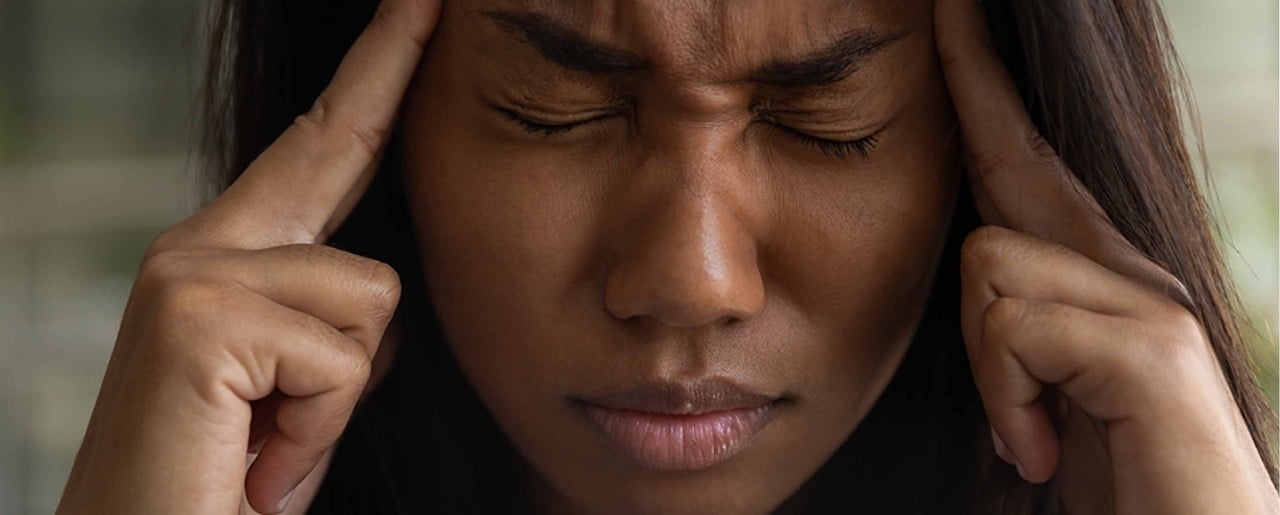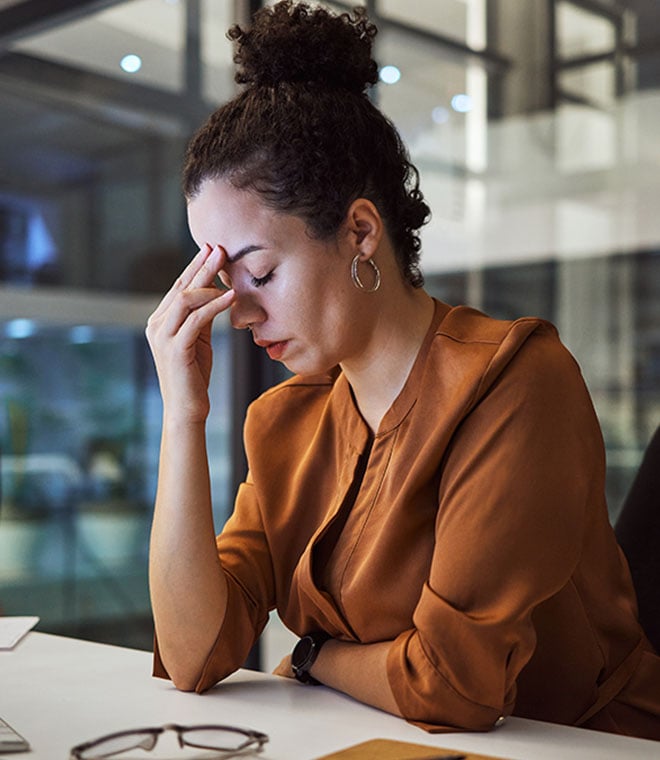Health
Migraine symptoms: What to watch out for
By Robert A. Fried, MD Feb 27, 2025 • 4 min
People might say they're having a migraine when they get an especially bad headache, but there's much more to migraine than just head pain. Migraine attacks come with a host of other unique symptoms, and they often progress through distinctive phases. Understanding the symptoms that may be associated with migraine may help you and your healthcare provider quickly identify a possible migraine attack and determine treatments that may be most appropriate for you. These may include over-the-counter migraine pain relief products or prescription medications.
What are the common types of headaches?
Headaches are one of the most common types of pain. It's a major reason why people miss work, skip school or decide to see a healthcare professional. Although there are many different types of headaches, some common types include:
- Tension headaches
- Cluster headaches
- Migraine headaches
What symptoms suggest a headache is a migraine?
Migraine is often referred to as a neurovascular condition, which means that many other symptoms may be experienced besides a headache. Many people with migraines also become sensitive to bright lights, loud noises, or odors, causing them to retreat during a migraine attack. Nausea and vomiting can be common symptoms as well. Some people find it painful to have their head touched, like when they're brushing their hair.
Some people who suffer from migraine attacks get warning symptoms, called an aura, before their headaches begin. This generally lasts for 15 to 30 minutes before the headache starts. Vision changes are an important part of a migraine aura. These might include:
- Blurred vision
- Flashing lights
- Seeing zigzag lines
- Temporary, partial loss of vision
Other symptoms of a migraine aura include weakness on one side of the body, burning or prickly sensations, and trouble speaking.
Typical migraine headaches occur on one side of your head or behind your eye. They usually begin gradually and get worse over several hours. Without treatment, a migraine typically goes away within four to 72 hours of onset. In contrast, tension headaches usually affect both sides of the head, don't throb, don't have an aura and don’t usually worsen from activity. Cluster headaches, which are very uncommon, typically begin without warning and usually peak quickly. They may last only a few minutes, but it’s possible to experience multiple cluster headaches in a day.
When to see your provider for headaches
People with migraines may still have other kinds of headaches, and sometimes headaches can indicate a more serious medical problem, possibly even an emergency. You should contact your healthcare provider right away or seek emergency care if you have any of these headache symptoms:
- A severe headache that comes on quickly, like a thunderclap
- A headache along with seizures, seeing double, a high temperature (fever), confusion, a stiff neck, or new numbness or weakness anywhere in the body
- A headache that begins after a head injury
- A headache that is made worse by coughing, straining, quick movements or physical exertion
- New headache pain that begins after age 50
While there is some overlap between the symptoms of tension, cluster and migraine headaches, migraine headaches typically occur on one side of your head, worsen from bright light, noise and movement, and often come with nausea and vomiting. Work with your healthcare provider to determine if your headaches are migraine headaches or something else.
Updated by Julie McDaniel, MSN, RN, CRNI, February 2025.
Sources:
- https://www.ninds.nih.gov/health-information/disorders/headache
- https://www.uptodate.com/contents/headache-causes-and-diagnosis-in-adults-beyond-the-basics/print
- https://www.ninds.nih.gov/health-information/disorders/migraine
- https://www.merckmanuals.com/professional/neurologic-disorders/headache/migraine
- https://familydoctor.org/condition/migraine/
- https://www.uptodate.com/contents/pathophysiology-clinical-manifestations-and-diagnosis-of-migraine-in-adults
- https://www.uptodate.com/contents/overview-of-thunderclap-headache
- https://medlineplus.gov/ency/patientinstructions/000424.htm
- https://www.aafp.org/pubs/afp/issues/2022/0900/acute-headache-adults.html




